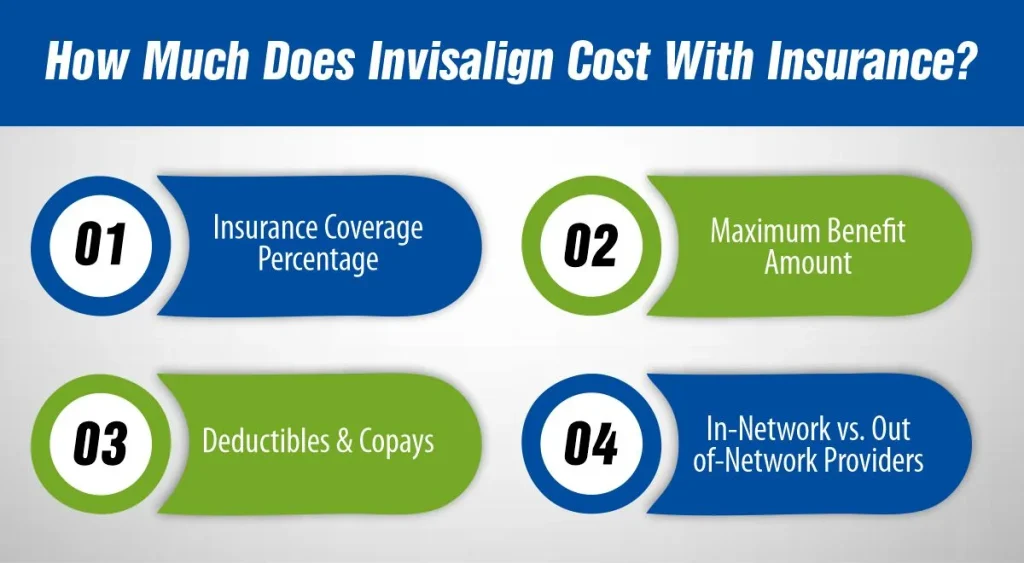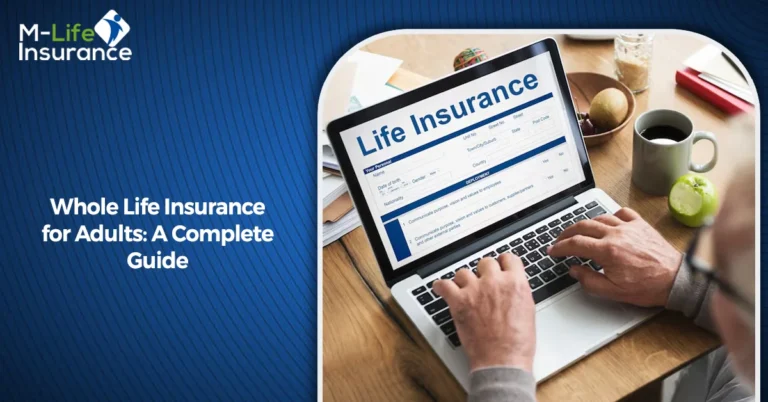Do you want to get Invisalign but are confused about whether dental insurance covers Invisalign, the nearly invisible braces that have become so popular? If you’re considering this modern orthodontic treatment, you’re not alone. Many people prefer Invisalign because it’s discreet, comfortable, and convenient.
However, figuring out if your insurance will help cover the costs can be tricky. In this blog post, we’ll try to figure out does dental insurance cover Invisalign. We’ll also talk about the factors that affect insurance coverage as well as the potential costs if you have to pay out-of-pocket and look at alternative options.
Let’s explore it together!
What is Invisalign?
Invisalign is a modern orthodontic treatment designed to straighten teeth. It involves using a series of clear, removable aligners made of smooth, transparent plastic. These aligners are custom-made to fit tightly over your teeth and gradually shift them into the desired position.
Unlike traditional braces, which use metal wires and brackets, Invisalign aligners are nearly invisible, making them a popular choice for individuals seeking a more discreet option for teeth straightening. The treatment process typically begins with a consultation with an orthodontist who takes digital scans of your teeth.
These scans are used to create a personalized treatment plan, including a series of aligners that are worn sequentially, with each set being replaced approximately every two weeks. By wearing the aligners for at least 22 hours a day and only removing them for eating, drinking, brushing, and flossing, patients can achieve a straighter smile without the need for traditional braces.
Does Dental Insurance Cover Invisalign?
Dental insurance coverage for Invisalign varies by plan. Some plans cover it partially or fully, while others may not cover it at all. While many dental insurance plans include orthodontic benefits, coverage for Invisalign specifically may differ.
Factors Affecting Coverage
Several factors can influence whether your dental insurance will cover Invisalign treatment:
- Plan Details: Some dental insurance plans specifically include coverage for Invisalign, while others may only cover traditional braces.
- Age Limits: Some plans have age restrictions for orthodontic coverage, which may impact coverage for Invisalign.
- Annual Limits: Many dental insurance plans have a cap on how much they will pay for orthodontic treatment each year, which can affect coverage for Invisalign.
- Lifetime Maximum: Some plans have a lifetime maximum for orthodontic treatment, which could impact coverage for Invisalign if you have already reached or exceeded this limit.
How to Check Coverage
To determine if your dental insurance plan covers Invisalign, you can take the following steps:
- Review Your Policy: Look over your dental insurance policy to see if it includes orthodontic benefits and whether Invisalign is specifically mentioned.
- Contact Your Insurance Provider: Call your dental insurance company and ask if Invisalign is covered under your plan.
- Consult Your Orthodontist: Your orthodontist can also help verify your insurance coverage and provide information on any out-of-pocket costs you may incur.
Common Scenarios
Here are some of the most common scenarios for the coverage of Invisalign by dental insurance:
- Full Coverage: Some premium dental insurance plans may cover Invisalign treatment fully.
- Partial Coverage: More commonly, dental insurance plans may cover a percentage of the cost of Invisalign treatment, with the patient responsible for the remaining balance.
- No Coverage: Some dental insurance plans do not cover Invisalign treatment at all, leaving the patient responsible for the full cost of treatment.
What is Invisalign Considered for Insurance?
Invisalign is generally classified under orthodontic care by dental insurance providers. This means that if your insurance covers orthodontic treatments, there’s a chance it will cover Invisalign as well. However, the extent of coverage can vary significantly depending on your specific insurance plan. It’s crucial to review your policy details or contact your insurance provider directly to understand the specifics of your coverage for Invisalign.
Given the benefits of Invisalign, such as being less noticeable and more comfortable compared to traditional braces, many people opt for this treatment. However, it’s important to be aware of any potential out-of-pocket costs associated with Invisalign treatment. Understanding how Invisalign is considered for insurance can help individuals make informed decisions about their orthodontic care and manage their treatment expenses effectively.
How Much Does Insurance Cover Invisalign?
Insurance coverage for Invisalign varies greatly based on your specific dental insurance plan and provider. If your plan includes orthodontic benefits, it will often cover Invisalign similarly to traditional braces. Here’s a breakdown of what you might expect:
- Coverage Amount: Insurance typically covers a portion of the treatment cost, often between 25% and 50%.
- Lifetime Maximum: Many plans have a lifetime maximum benefit for orthodontic treatments, usually ranging from $1,000 to $3,000.
- Additional Costs: You will need to consider any deductibles, co-pays, and whether your orthodontist is within your insurance network.
- Restrictions: Some plans may have age restrictions or other prerequisites for coverage.
To get a precise understanding of how much your insurance will cover for Invisalign, it’s best to directly consult your insurance company and your orthodontist. They can provide detailed information on your coverage, including any out-of-pocket costs you may incur.
How Much Will Dental Insurance Cover for Invisalign?
The amount of coverage for Invisalign by dental insurance varies widely depending on the specific insurance plan. Some insurance plans may cover a portion of the cost, while others may cover it fully. In general, if your dental insurance covers orthodontic treatments, there is a possibility that it will cover Invisalign as well.
It’s important to review your insurance policy or contact your insurance provider directly to understand the extent of coverage for Invisalign under your plan. Factors such as deductibles, co-pays, annual maximums, and whether the treatment is considered medically necessary can all affect how much your insurance will cover for Invisalign.
Additionally, some insurance plans may have age restrictions or other limitations on orthodontic coverage, which can impact the amount of coverage you receive for Invisalign treatment.
How Much Does Invisalign Cost With Insurance?
The cost of Invisalign with insurance can be much lower than paying for it entirely out-of-pocket. However, the exact amount you’ll need to pay depends on the specifics of your dental insurance plan. Here’s a breakdown of what to expect:
How Much Does Life Isurance Cost?
1. Insurance Coverage Percentage
Dental insurance that covers Invisalign usually includes a percentage of the total cost. This coverage can range from 50% to 80% or more. For example, if your plan covers 60% of the treatment cost, your insurance will pay 60% of the total Invisalign cost, and you’ll be responsible for the remaining 40%.
2. Maximum Benefit Amount
Many dental insurance plans have a maximum benefit amount for orthodontic treatments, including Invisalign. This is the highest amount your insurance will pay towards your treatment. The maximum benefit can vary significantly between plans but typically falls between $1,000 and $2,500. For instance, if your maximum benefit is $2,000 and your Invisalign treatment costs $5,000, your insurance will cover up to $2,000, and you’ll need to pay the remaining $3,000.
3. Deductibles and Copays
Insurance plans often have deductibles, which is the initial amount you must pay before your insurance starts covering the costs. After meeting your deductible, you may also have to pay copays, which are your share of the treatment costs. For example, if your deductible is $500 and you’ve met it, you might then be responsible for a copay of 20% of the treatment cost.
4. In-Network vs. Out-of-Network Providers
Choosing an orthodontist within your insurance network (in-network) can lead to better coverage and lower costs. If you use an out-of-network provider, you might receive less coverage and face higher out-of-pocket expenses. For example, your insurance might cover 70% of the cost with an in-network provider but only 50% with an out-of-network provider.
Cost of Invisalign without Insurance
The cost of Invisalign without insurance can vary widely depending on several factors, including the severity of your dental issues, where you live, and any additional treatments you might need. Here’s a general idea of some approximate cost ranges:
- Mild Cases: If your teeth only need minor adjustments, the cost typically ranges from $2,500 to $4,500.
- Moderate Cases: For more complex alignment issues, the cost usually falls between $4,500 and $6,500.
- Severe Cases: If you have significant dental problems that require extensive treatment, the cost can be between $6,500 and $8,000 or more.
These are rough estimates, and the actual cost can vary based on your specific needs. To get an accurate estimate for your treatment, it’s best to schedule a consultation with an experienced orthodontist or dentist. They can assess your situation, provide a detailed treatment plan, and give you a precise cost estimate.
Alternatives to Invisalign
While Invisalign is a popular choice for many seeking discreet orthodontic treatment, it’s not the only option available. Here are some alternatives to consider if Invisalign doesn’t suit your needs or budget:
1. Traditional Metal Braces
Traditional metal braces are the most common orthodontic treatment. They use metal brackets and wires to move teeth into place over time. Here’s why they might be a good alternative:
- Effectiveness: Highly effective for complex dental issues.
- Cost: Often less expensive than Invisalign.
- Durability: Metal braces are very durable and less likely to break than clear aligners.
2. Ceramic Braces
Ceramic braces work similarly to metal braces but use clear or tooth-colored brackets, making them less noticeable. Key points include:
- Aesthetic Appeal: Less visible than metal braces.
- Effectiveness: Just as effective as metal braces for most dental issues.
- Care: They require careful cleaning to avoid staining.
3. Lingual Braces
Lingual braces are placed on the inside surface of the teeth, making them invisible from the outside. Consider these aspects:
- Invisibility: Completely hidden from view.
- Customization: Custom-made to fit each patient’s teeth.
- Complexity: Can be more challenging to clean and may cause tongue discomfort initially.
4. ClearCorrect
ClearCorrect is another brand of clear aligners, similar to Invisalign. They offer:
- Transparency: Made of clear plastic, so they’re nearly invisible.
- Flexibility: Treatment plans can be more flexible in terms of cost and duration.
- Comfort: Aligners are removable for eating and cleaning.
5. SmileDirectClub
SmileDirectClub offers clear aligner treatment that you can manage mostly at home. This option includes:
- Cost: Often cheaper than Invisalign.
- Convenience: Fewer in-office visits; most of the process is done remotely.
- Suitability: Best for mild to moderate alignment issues.
Understanding these alternatives helps in making an informed decision about orthodontic treatment. Each option has its benefits and considerations, so consulting with an orthodontist is crucial to determine the best fit for your dental needs.
Conclusion
While wrapping up, we can say you may know does dental insurance covers Invisalign. Well! Invisalign is a great option for straightening teeth discreetly. Whether dental insurance covers it depends on your specific plan. Always check with your insurance provider and orthodontist. Even if it’s not covered, there are payment options available. And remember, there are alternatives if Invisalign isn’t the right fit for you.
References:
https://www.aflac.com/resources/dental-insurance/does-dental-insurance-cover-invisalign.aspx
https://www.humana.com/dental-insurance/dental-resources/does-dental-insurance-cover-invisalign

Joyce Espinoza, Expert Life Insurance Agent
Joyce Espinoza is a trusted life insurance agent at mLifeInsurance.com. She’s been in the insurance industry for over ten years, helping people, especially those with special health conditions to find the right coverage. At MLife Insurance, Joyce writes easy-to-understand articles that help readers make smart choices about life insurance. Previously, she worked directly with clients at Mlife Insurance, advising nearly 3,000 of them on life insurance options.





